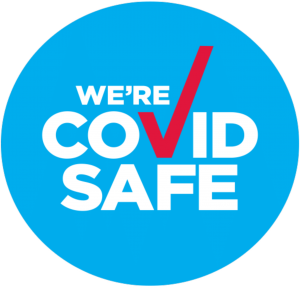Solutions for Ankle and Foot Injuries
Physiotherapy and clinical exercise programs are available for ankle and foot injuries to decrease pain, progress towards optimum function and prevent recurrence of the problem.
Treatments Available Include:
- Biomechanical Analysis of Gait
- Progressive Strengthening & Stabilizing Exercises
- Balance Training
- Pre and Post-Operative Care
This approach is beneficial for conditions such as:
- Achilles Tendinopathy
- Ankle Sprains
- Calf Muscle Sprains
- Plantar Fasciitis
- Shin Splints
- Post-Operative Rehabilitation
- Running Injuries
ACHILLES TENDINOPATHY
Achilles Tendinopathy is a relatively common presentation in both active and inactive populations, although more common in sporting populations.
The term Achilles Tendinopathy may encompass symptoms of any disorder related to the Achilles tendon.
The most common painful areas
• Mid-portion of the tendon
• Insertional area, were the tendon meets the bone.
Signs and Symptoms
The most common presentation is a slow onset discomfort and pain around the mid-portion of the Achilles while walking or running.
• The tendon may feel stiffness first thing in the morning and at the beginning of exercise but gets less during activity and may worsen when you cool down.
• Feeling pain or stiffness, the next morning after activity.
• The calf muscles may feel stiff with a lack of strength.
• You may notice a slight lump at the mi-portion of the Achilles.
• The tendon may be painful to touch.
The Achilles tendon
The Achilles tendon is a load-bearing tendon originating from the gastrocnemius and soleus muscles and inserting at the (calcaneus) heel bone.
The Achilles tendon is extremely strong and can withstand the multitude of our regular daily activities including the demands of sport such as climbing, running and jumping.
Tendons are simple structures their main function is to transmit tensile loads from muscle to bone.
The special characteristics of the Achilles tendon, is that it has an energy-storage capacity and will thicken to adapt with repeated loading.
As long as the functional demands don’t exceed our ability to compensate, we remain uninjured.
What causes Achilles Tendinopathy?
The body has an amazing ability to adapt to increased activity and steady loading. But a sudden change in terrain or the increase in activity such as frequency, intensity or duration may tip the scales making the tendon vulnerable to injury.
The body tissues are constantly being challenged, strained and broken down with activity.
During rest the body repairs any damage and can make the tissues stronger.
But if the body is challenged faster than it can repair, the tissues fail to adapt, finally tipping the scales towards degeneration leading to symptoms of pain and discomfort.
Muscle strength (research findings)
Research by the S. O’Neill group in the UK found that runners with Achilles Tendinopathy had less endurance in both their calf muscles (plantar-flexors) compared to the control group.
Also the symptomatic side in the tendinopathy group was weaker than the non-affected side; therefore the contralateral side should not be used as a normal measure of endurance.
Other possible causes of Heel pain
• Lumbar referred pain
• Plantaris Tendinopathy
• Sural nerve referred pain
• Soleus/ gastrocnemius strain
• Lower limb trigger points
• Inflamed paratendon
• Insertional Tendinopathy
• Posterior impingement
• Retrocalcaneal bursa
• Metabolic disorders
• Tibialis posterior/ Flexor halluces longus Tendinopathy
Physical Examination
This should include a full history and risk factors leading to the event
Observation
Functional kinetic chain assessment
Palpation/ Localization of pain
Load response: strength and endurance
Treatment:
Education
Pain management
Specific loading to gastrocnemius and soleus muscles
Ensure the tendon meets the functional and loading demands required for sport and daily life.
A progressive exercise program is the protection you can have against further injury.
Just like muscles, tendons get stronger with exercise. Starting exercise that produces no or minimal pain and progressively increasing the intensity of exercise.
References:
AL-Uzri M M, O’Neill S. 2014. The effect of eccentric exercises on plantar-flexor power in healthy individuals. BJSM Vol 48 issue Suppl 2.
Brukner & Khan’s. Clinical Sports Medicine 5th Ed. 2017, Vol 1 Injuries. 865-888.
Cook J L , Purdam C R . 2013. The challenge of managing tendinopathy in competing athletes. BJSM
Murphy M, Travers M, Gibson W, et al. Rate of Improvement of Pain and Function in Mid-Portion Achilles Tendinopathy with Loading Protocols: A Systematic Review and Longitudinal Meta-Analysis. Sports Med 2018; 48: 1875-1891.
O’Neill S, Watson P, Barry S. 2014. Plantarflexor muscle power deficits in runners with Achilles Tendinopathy. BJSM Vol 48 issue Suppl 2.
Pizzolato C , Lloyd DG , Zheng MH, Besier TF, Shim VB. 2018. Finding the sweet spot via personalized Achilles tendon training: the future is within reach. BJSM



